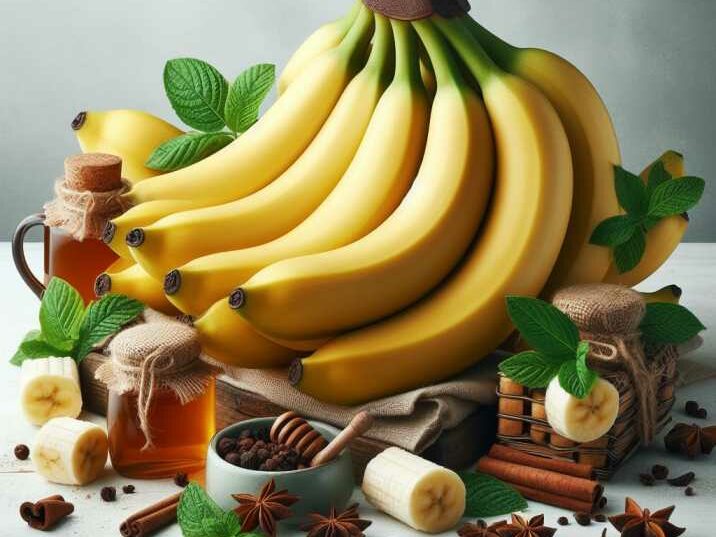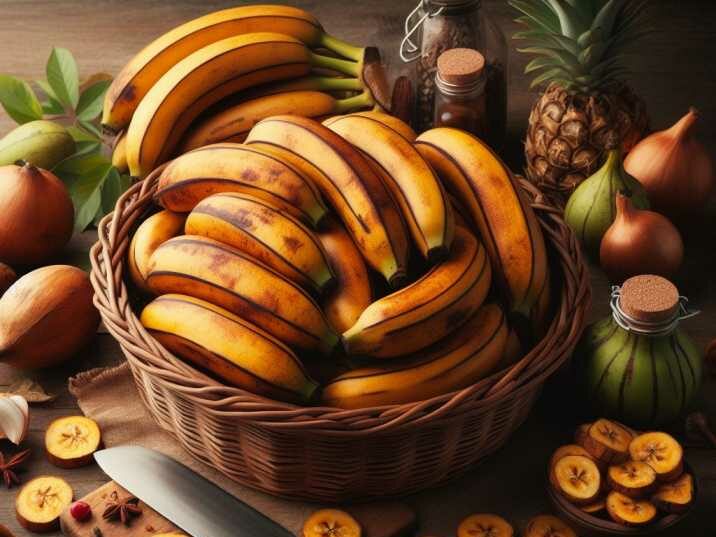Introduction:
Table of Contents
When it comes to fruits, few evoke the imagery and taste sensations quite like bananas and plantains. Both belong to the Musaceae family, but their differences extend beyond mere appearances. In this detailed exploration, we’ll delve into the primary distinctions between Cavendish bananas and plantains, from their physical attributes to their culinary applications and nutritional values.
Cavendish Bananas and Plantains
Physical Appearance:
Cavendish bananas, with their vibrant yellow peel, are slender and curved, typically shorter in length compared to plantains. In contrast, plantains boast a thicker, greenish-yellow peel that darkens as they ripen. They’re generally larger and more angular in shape than their banana counterparts.

Culinary Uses:
Cavendish bananas are commonly consumed raw, enjoyed as a quick snack or incorporated into smoothies, cereals, and desserts. Their sweet flavor and creamy texture make them a versatile ingredient in various dishes. On the other hand, plantains are often cooked before consumption due to their starchy consistency. They’re popular in savory dishes, such as fried plantains or plantain chips, where their firm texture holds up well to heat.
Flavor Profile:
The primary difference in flavor between Cavendish bananas and plantains lies in their starch and sugar content. Cavendish bananas are sweeter with a milder taste, while plantains have a less sweet, more complex flavor profile, reminiscent of potatoes when cooked.
Nutritional Composition:
In terms of nutritional value, both fruits offer distinct benefits. Cavendish bananas are a rich source of potassium, vitamin C, and vitamin B6. They’re also low in calories and fat, making them a nutritious choice for a quick energy boost. Plantains, on the other hand, are higher in carbohydrates and fiber, providing sustained energy and promoting digestive health.
Ripening Process:
Cavendish bananas undergo a gradual ripening process, transitioning from green to yellow as they mature. They’re typically consumed when fully ripe, with brown spots appearing on the peel indicating optimal sweetness. Plantains, however, can be consumed at various stages of ripeness. Green plantains are firmer and starchy, ideal for frying, while yellow or blackened plantains are sweeter and softer, suitable for baking or mashing.

Cultivation and Distribution:
Cavendish bananas are the most widely cultivated and exported banana variety globally, prized for their consistent size, taste, and shelf life. They thrive in tropical climates and are primarily grown in countries like Ecuador, the Philippines, and Costa Rica. Plantains, on the other hand, are more commonly cultivated in regions with a tropical climate, such as Africa, Latin America, and Southeast Asia.
Cultural Significance:
Beyond their culinary differences, Cavendish bananas and plantains hold cultural significance in various cuisines worldwide. Bananas are often associated with tropical paradises and symbolize hospitality and friendship in many cultures. Plantains, on the other hand, feature prominently in traditional dishes across Africa, the Caribbean, and Latin America, serving as a staple food source for many communities.
Conclusion:
In summary, while Cavendish bananas and plantains share some similarities as members of the same botanical family, their differences are apparent in their physical appearance, culinary uses, flavor profiles, nutritional compositions, ripening processes, cultivation methods, and cultural significance. Whether enjoyed as a sweet snack or a savory side dish, these two fruits offer a diverse array of flavors and culinary possibilities.
FAQs:
Q1: Are Cavendish bananas and plantains the same fruit? A1: No, while they belong to the same botanical family, they are distinct fruits with different characteristics, flavors, and culinary uses.
Q2: Can you eat plantains raw like bananas? A2: While technically safe to eat raw, plantains are best enjoyed cooked due to their starchy consistency and less sweet flavor compared to bananas.
Q3: Are plantains healthier than bananas? A3: Both fruits offer unique nutritional benefits. Plantains are higher in carbohydrates and fiber, while bananas are lower in calories and fat.
Q4: Can you substitute plantains for bananas in recipes? A4: In some cases, yes. However, keep in mind that plantains have a firmer texture and less sweet flavor, which may affect the outcome of certain dishes.
Q5: Where can I buy Cavendish bananas and plantains? A5: Both fruits are commonly available in grocery stores, markets, and supermarkets, especially in areas with diverse culinary offerings.
